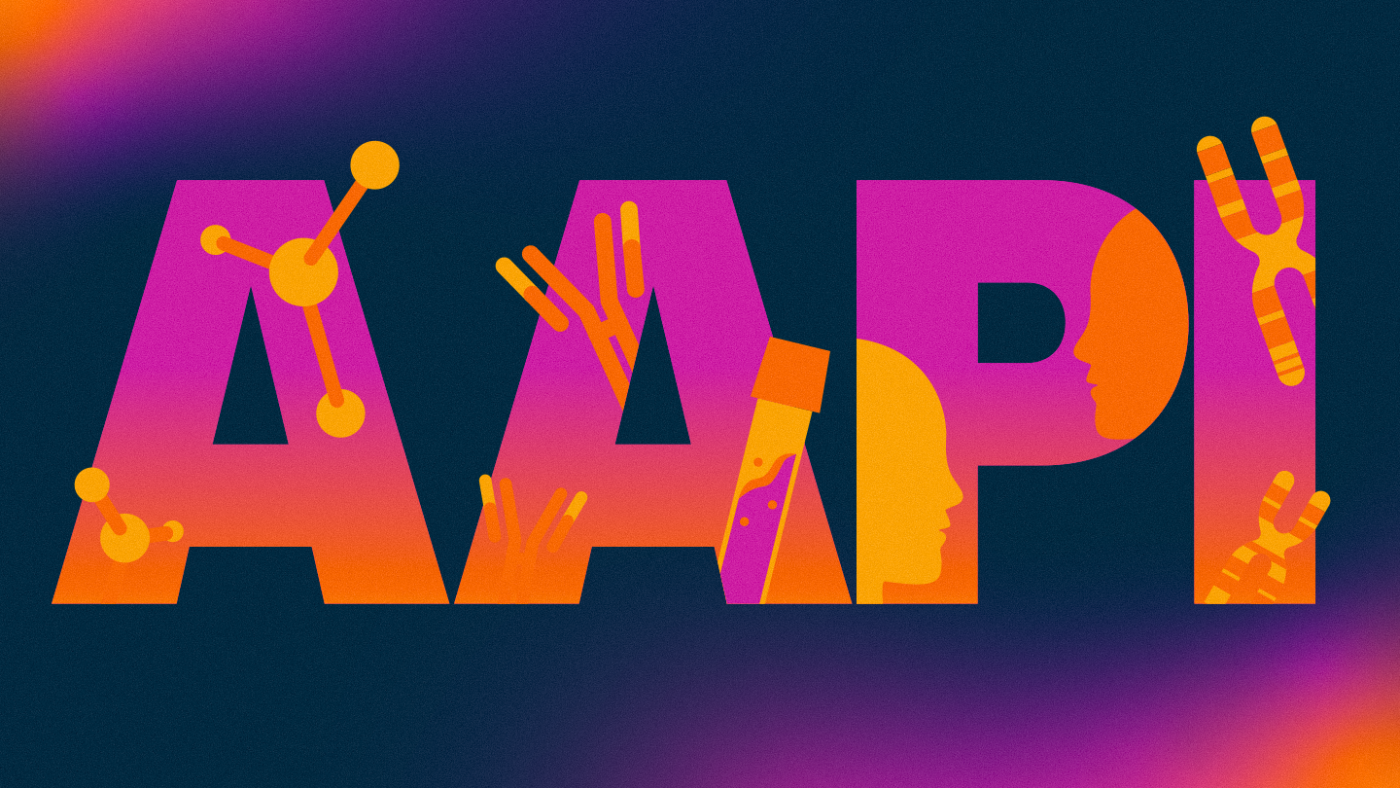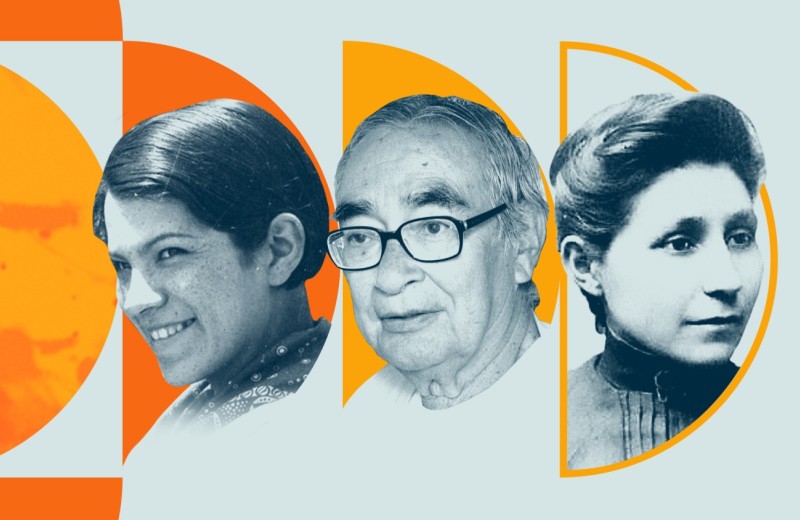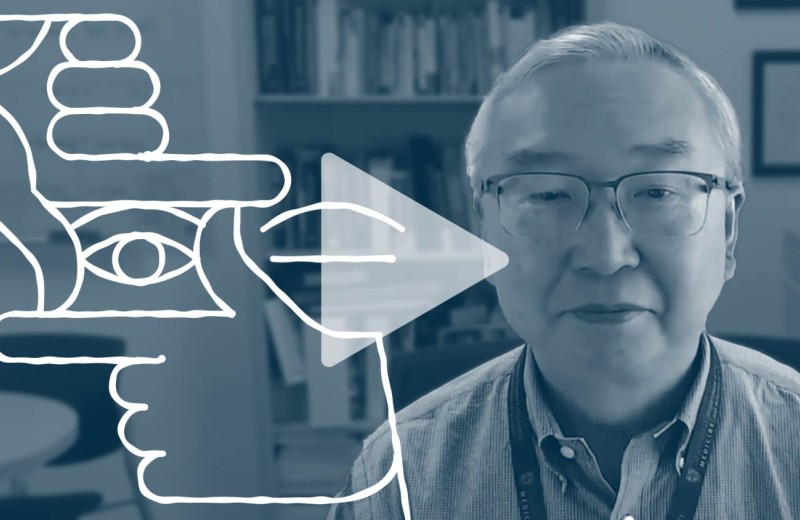Gladstone NOW: The Campaign Join Us on the Journey✕

May is Asian American and Pacific Islander Heritage Month
Asian American and Pacific Islander (AAPI) Heritage Month, which takes place annually in May, offers the opportunity to celebrate and recognize the APPI members of Gladstone’s community. These individuals impact every aspect of the organization, from research operations to science. A few of Gladstone’s scientists who identify as AAPI shared what drew them to science and how their identity has impacted their work.
Irene Lew, Research Associate, Paz Lab
What drew you to the science you’re currently working on?
Jeanne Paz, PhD, has an infectious way of inspiring and motivating others to work on deciphering the brain’s circuits. For me, it was the promise that I can make a difference in this world—a very real difference by assisting in the basic science that her lab is working on.
Do you have advice for people who are interested in a career in science, particularly for Asian Americans?
There are many ways to contribute to this world. Basic science is definitely a great way to have fun and be productive at the same time. What is better than to be at the forefront of cutting-edge science and answering the questions that could one day be in a textbook for others to learn? Academia is a great place to meet people from all over the world that could share this interest.
A career in science is important for Asian Americans. Our community is diverse and large— someone needs to be answering the questions relevant to our group.
Sung-Soo Jang, PhD, Postdoctoral Scholar, Huang Lab
What drew you to the science you’re currently working on?
When I was younger, my father, who was a science teacher in high school, had always taken me to places like science museums and research labs. He always instilled in me the habit of thinking about cause and effect when looking at objects or phenomena. Naturally, this habit of thinking ultimately led me to the path of a researcher. Through a master’s degree and mandatory military service in Korea, and then a PhD in the United States, I became interested in understanding changes in neural networks that cause cognitive dysfunction in the brain, and investigating how individual neurons are altered upon aging and in Alzheimer’s disease. For these reasons, I joined the lab of Yadong Huang, MD, PhD at Gladstone Institutes 2 years ago, and have been looking at ApoE4-related changes in electrical activity of hippocampal neurons, contributing to abnormal cognitive function.
Have you had a particularly inspiring mentor or role model? What did you learn from them?
In 2019, when finishing up my PhD in neuroscience at University of Illinois at Urbana-Champaign, I accidentally met Taeghwan Hyeon, PhD, who is a world renowned chemist and a distinguished professor at Seoul National University, and we had the opportunity to talk about our research. Through scientific discussion with him, I had a chance to participate in his ongoing project regarding potassium sensors that were newly developed using nanomaterials, which was under review in Nature Nanotechnology. He is recognized as the best Korean scientist with an excellent reputation, and he consistently shows academic purity and a modest attitude as a scientist, and emphasizes the importance of network formation in the science field. To this day, I maintain a good relationship with him and continue to learn many things from him including intellectual curiosity, innocence, and enthusiasm that are necessary for being a good neuroscientist.
What is the most exciting part of your work?
My research topic is to elucidate how ApoE4, a major genetic factor for Alzheimer’s disease, affects electrophysiological properties of excitatory and inhibitory neurons in the hippocampus, which is the most important brain region for multiple cognitive functions. The most interesting thing about conducting research is that it’s revealing for the first time something that no one has seen. Furthermore, I have great interest and expectation that, based on the results of ApoE4-related changes in electrical activity of individual neurons (which are the basic units in the brain), my work can offer a novel perspective on treating Alzheimer’s disease.
Kihyun Lee, PhD, Postdoctoral Scholar, Srivastava Lab
What drew you to the science you’re currently working on?
While I was working as a pharmacist in South Korea, I was frustrated when a symptomatic remedy was the only treatment I could provide for patients. As my desire to help them grew bigger and bigger, I wanted to help patients to become free of diseases by understanding the origin of their diseases and finding a better treatment for them. During my graduate study at Weill Cornell Medical College, it was clear to me that I wanted to study translational science which can be later converted to therapy. In that regard, Deepak Srivastava’s lab at Gladstone Institutes is the best place to perform my postdoctoral research, because I can study which genes cause congenital heart diseases in newborn babies. I’m thrilled about my research as I can make a huge impact on the lives of newborns by bringing to light the reason for their sickness, and hopefully find preventive care for their potential next siblings. I’m fascinated by this opportunity and I want to help people as much as I can during my life with my scientific knowledge and expertise.
Have you had a particularly inspiring mentor or role model?
When I was at Ewha Womans University for my undergraduate degree, I met my mentor, Eun Sook Hwang. She had also graduated from my college, and seemed to have a perfect life in my perspective at that time. I admired her a lot, which led me to join her group for my master’s degree. I’ve established a strong relationship with her through my early career in research, and she became the most supportive person for my career. I really appreciate the fact that I was able to have a person I can relate to as my mentor.
Why is representation important in the sciences, especially in leadership roles?
Having a role model who you can personally relate to is the most important component of success for early career scientists, whether you’re a high schooler, undergraduate, graduate student, or postdoc. By looking up their role models, early career scientists can imagine themselves in their mentors’ shoes and aspire to be like them. During the long and agonizing process of scientific training, this inspiration can keep trainees motivated to continue their scientific career. If you don’t see people who look like you in leadership roles, it’s hard to imagine yourself as a leader in the future. Having representation of different genders or races in leadership helps trainees to engage and act proactively with the hope that they can become a leader in the future.
Victoria Yoon, Research Scientist, Huang Lab
What drew you to the science you’re currently working on?
My first exposure to neuroscience was as an undergraduate student at UC Berkeley. Marian Diamond, a world-renowned scientist educator, was my human anatomy professor. On the first day of class, she walked down a long aisle in a lecture hall of 800 students, carrying stacks of files and papers on one arm, and a beautiful fascinator box on the other. On the stage, she put on the nitrile gloves and took out a human brain from the fascinator box. That was my introduction to neuroscience, and I’m fortunate to be able to continue to feed my fascination with the human brain by studying why it gets sick and how we can fix it.
Have you had a particularly inspiring mentor or role model? What did you learn from them?
John Matsui, PhD, was my first Asian American professor at UC Berkeley in biological science. It was quite an experience to take his classes and learn from many of his stories. First, he was my first science teacher of Asian descent in the United States, so seeing such an educator in the front of the room, while learning science fundamentals, was a powerful visual to witness. Second, his distinct passion for opening the door to STEM—and keeping it open—for the community of students from a low socioeconomic background, many of whom were of Black, Latinx, and Asian descent, was inspiring. His expectation for his students to give back as we move on to our various careers keeps me checking to see whether I’m living up to the ideals and vision that he has set—creating a community of diverse and inclusive scientists.
What is the most exciting part of your work?
Science, at the end of the day, is a journey with many failures. In the lab, we go through many failed experiments and projects—sometimes, daily. What gets us back up are two things. First, our passion for the search for the unknown. Having space and time to explore for what it can be, allows us to be optimistic and motivated to move forward. Second, we are clear-eyed on the beneficiaries of our work: patients, colleagues, and the next generation of scientists. These two things make my work exciting and make me proud that I’m contributing to the good of these communities.
Do you have advice for people who are interested in a career in science, particularly for Asian Americans? Asian Americans are a very diverse group of people, on a wide and large spectrum of socioeconomic status. We also have Asians who come to the US for educational pursuits in the sciences—all this to say that the barriers to entry into science are very circumstantial for many Asians and Asian Americans. Therefore, my advice for both communities that are interested in a career in science, whether it be in the United States or elsewhere in the world, is to own your unique identity and story. Use and leverage them to carve out your own journey into science. When the days are going bad, your identity and story, if you own and honor it, is what is going to get you into the door and ensure that you stay on course.
Why is representation important in the sciences, especially in leadership roles?
It’s hard to be what you cannot see. Representation allows the younger generation to see themselves and their stories reflected in their mentors, and gives hope that they too can be in scientific leadership roles. It serves as an accelerant to the growth of the community of the next generation that will surpass the achievements of the current one, which in turn will benefit the patients who continue to suffer.
Want to Join the Team?
Our people are our most important asset. We offer a wide array of career opportunities both in our administrative offices and in our labs.
Explore CareersHighlighting Native American Scientists
Highlighting Native American Scientists
Learn more about these indigenous scientists who’ve made an impact on their fields
Communications DiversityNeurodiversity in the Workplace
Neurodiversity in the Workplace
Hear about the “Strengths-Based Model of Neurodiversity” and how it can help neurodiverse individuals be successful in finding employment and in maximizing their professional potential
Communications DiversityPUMAS Program Receives Five-Year Grant to Fuel Outreach, Diversify Science
PUMAS Program Receives Five-Year Grant to Fuel Outreach, Diversify Science
The impactful summer internship program, created at Gladstone Institutes, immerses select undergraduates in cutting-edge science
Postdoctoral and Graduate Student Education and Research Development Affairs Student Outreach and Science Education Institutional News Diversity



